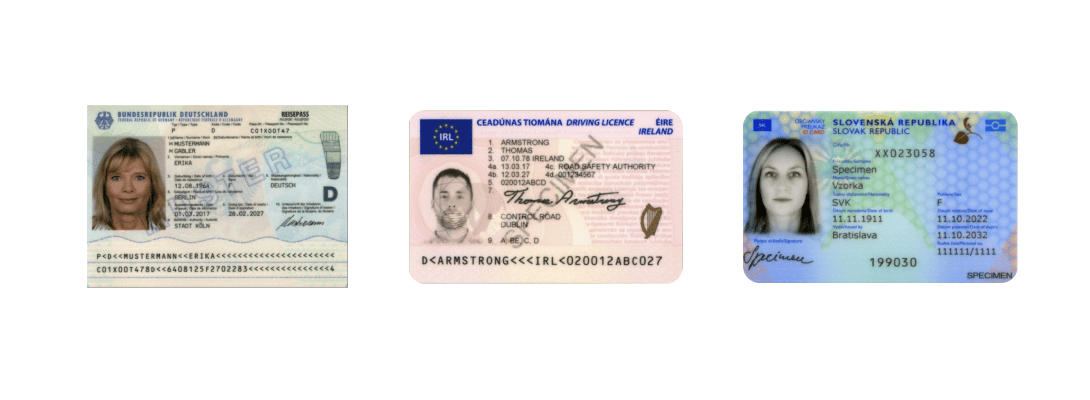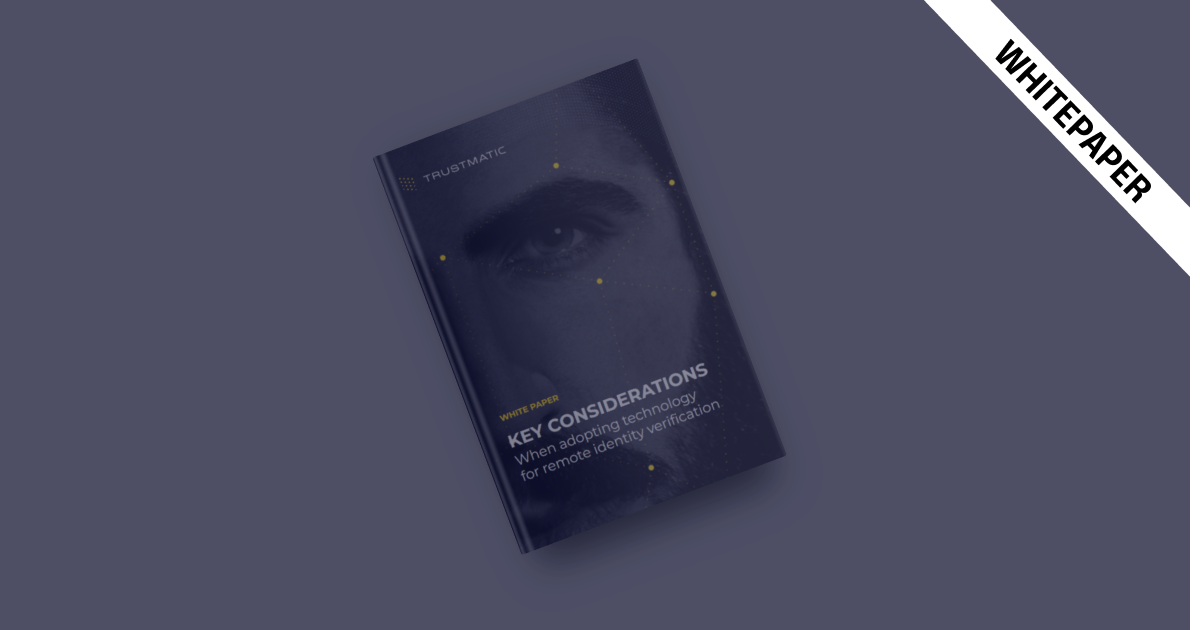Whether it’s for protecting your business, carrying out Know Your Customer (KYC) checks, or preventing underage access to age-restricted services, being able to discern a fake ID from a genuine one is a critical skill.
This article aims to equip you with the knowledge and techniques you need to accurately spot counterfeit identity documents.
Understanding Valid IDs
Understanding what a valid ID looks like is the first step towards spotting a counterfeit one. While the forms of ID considered "valid" may differ depending on the service or product in question, generally accepted identification documents include:
-
A current signed passport
-
A photo driving licence
-
A national identity card

These forms of identification serve as proof of your name, your age, and your physical appearance. The level of scrutiny required can range from a quick glance (like when a cashier checks age for alcohol purchase) to a thorough examination by trained professionals at passport control. The latter may involve the use of technical tools to verify the document's authenticity and analyze hidden security features.
Signs of a Fake ID
Spotting a fake ID often boils down to identifying certain telltale signs. For instance, counterfeit IDs typically have a hologram that is visibly glued on top of the plastic rather than integrated within the card itself. Fake driving licenses may have incorrect flag images, poorly replicated holograms, or simplified backgrounds. Counterfeit passports might contain an incorrect number of pages, non-digitally printed photographs, or lack a passport chip.
Where to look for red flags
There are certain signs that will indicate that an ID is fake. Even with advanced printing technologies and high-quality materials, fake IDs usually exhibit noticeable differences from their authentic counterparts in appearance and texture. Here's how to identify them:
-
Background: Official IDs feature complex backgrounds as a security measure, making them difficult to forge. Counterfeit IDs often exhibit inconsistencies in the background due to difficulties in replicating these complexities.
-
Hologram: Authentic IDs have holograms that are intentionally challenging to replicate. On counterfeit IDs, these holograms may differ in appearance or application, resulting in an uneven surface when touched.
-
Information: Check the personal information on the ID. Any discrepancies in the name, dates, license number, barcode, or style of the ID (these purposefully change over time) could signal a forged document.

Understanding these key indicators will enhance your ability to spot fake IDs, ensuring the integrity of your identity verification processes and safeguarding against fraudulent activities.
Digital Detection of Fake IDs
Detecting fake IDs using only a smartphone camera, without physical inspection, poses a unique challenge. Counterfeit documents can often look identical to the untrained eye, especially when viewed through a camera lens. However, advancements in artificial intelligence (AI) and computer vision have made it possible to detect certain forms of fake IDs with a high degree of confidence.
AI-powered methods, such as machine learning algorithms, can be trained to recognize the minute differences and anomalies that signify a forged document. These algorithms can analyze the holograms, text layout, fonts, colors, and even the microprint of an ID to determine its authenticity. This technology is rapidly improving, making digital ID verification a reliable and crucial tool in combating fraud.
How Trustmatic checks IDs and protect business
At Trustmatic, we leverage these advanced AI technologies to provide robust and accurate ID verification. Our software performs real-time verification of identity documents, enabling you to prevent identity fraud and detect advanced fraudulent attacks, including fake and tampered documents.
Our platform can verify over 12,500 IDs from 248 countries and territories, ensuring the authenticity of your customers' identities in a matter of seconds. Users simply need to take a photo of their ID. Our software then identifies the document type, determines if an image of the ID's reverse side is needed, and instantly provides feedback to the user while extracting data to detect tampered or fraudulent IDs.
With Trustmatic, you can truly know your customers, ensuring compliance with the latest KYC regulations and fostering trust in your business.
Conclusion
While the rise of technology has made the creation of fake IDs easier, it has also provided us with powerful tools to combat this fraudulent activity. By combining your knowledge of genuine identification cards, an understanding of the telltale signs of counterfeits, and the use of AI-powered ID verification software like Trustmatic, you can effectively protect your business, uphold the integrity of legal processes, and ensure safety.
Interested in harnessing the power of AI for your ID verification process? Request a demo today.



